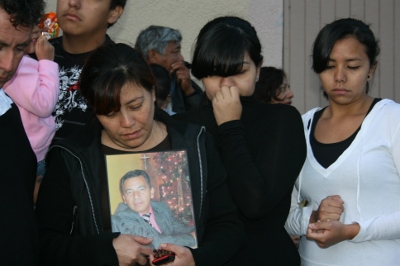
On Thursday evening, the sidewalk between a strip mall and a parking lot turned into a makeshift altar for Mario. About two dozen of his family and community members gathered with candles and a bouquet of white roses for a candlelight vigil in his memory.
“We were walking down the street, and were not expecting this violence,” said Vilma. “We were going back home to have dinner with the family, but we could not get that. We got a tragedy.”
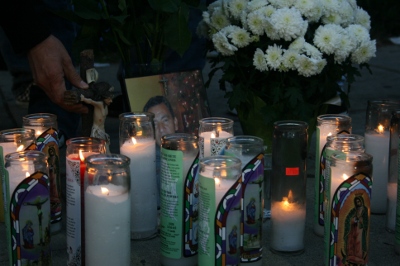
The Riveras moved to the U.S. from Guatemala three years ago. They initially settled in the San Fernando Valley, but moved to the Crenshaw neighborhood three months back. The couple did not like life in the U.S and were planning to move back to their country next month, said Cisneros.
Mario is survived by his daughters Grisel, 27, Vivian, 25, son Diego, 18, and two grandchildren. His nephew, Mynor Mancella, 24, said the family was devastated by the sudden loss. “Vilma wishes it had happened to her instead of her husband,” said Mancella. “He was everything to her. They were high school sweethearts and have been through everything together.”
Mancella said though he had lived here for three years, he did not feel safe. Three months ago, his aunt got mugged at a gas station where she worked on Crenshaw and Adams, and two years earlier, a security guard was killed at a Bank of America nearby. “When a man leaves home in the morning, there’s no knowing if he will come back to his family at night,” said Mancella.
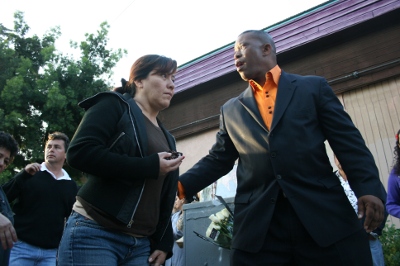
Eddie Jones, president of Los Angeles Civil Rights Association, who organized the vigil, said the aim was to show the community that “we are not going to tolerate this anymore.” “This is about blood. The community is extremely upset and we want to come together to do everything to keep crime rates down,” he said.
On Saturday Jones plans to organize a drive to trim the bushes and grass on the sidewalk behind which the shooter was hiding. “We are going to work along with the LAPD and with the community to get these shooters off the streets,” he said. No arrests have yet been made in the case.
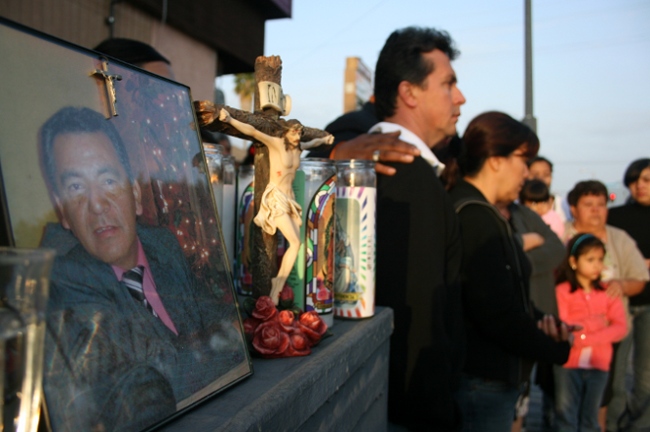
Family members stand beside a portrait of Mario Rivera who was killed in a possible gang-related shootout in Crenshaw Tuesday.
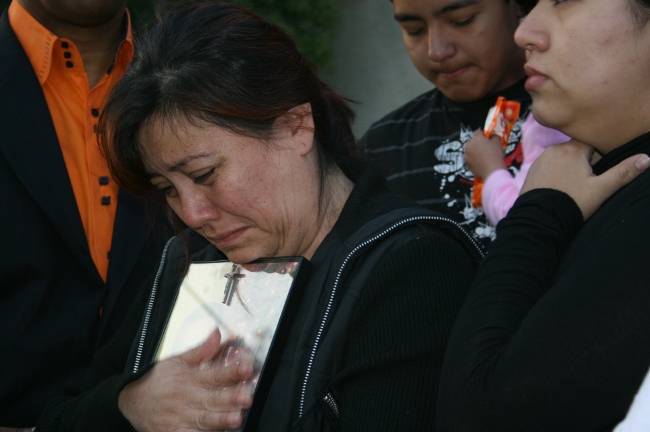
Vilma Rivera cries holding a picture of her husband.
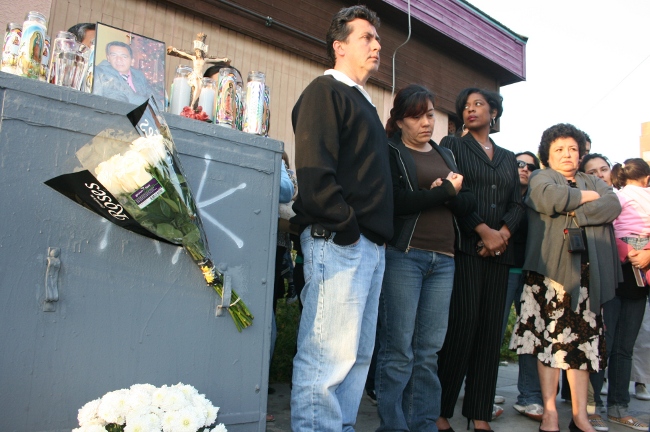
Family members stand at the makeshift altar for Mario Rivera.















